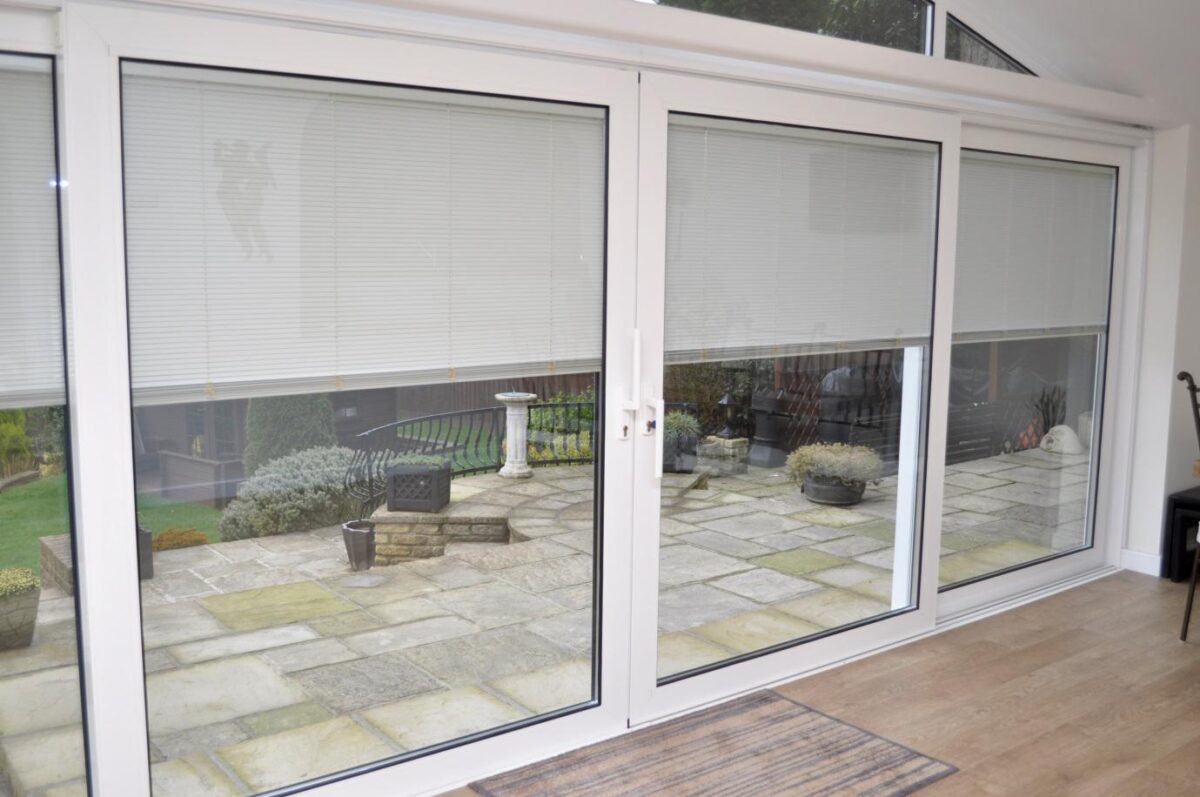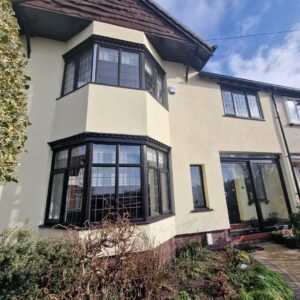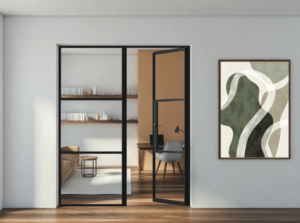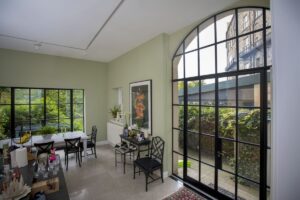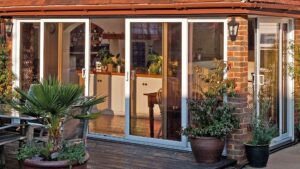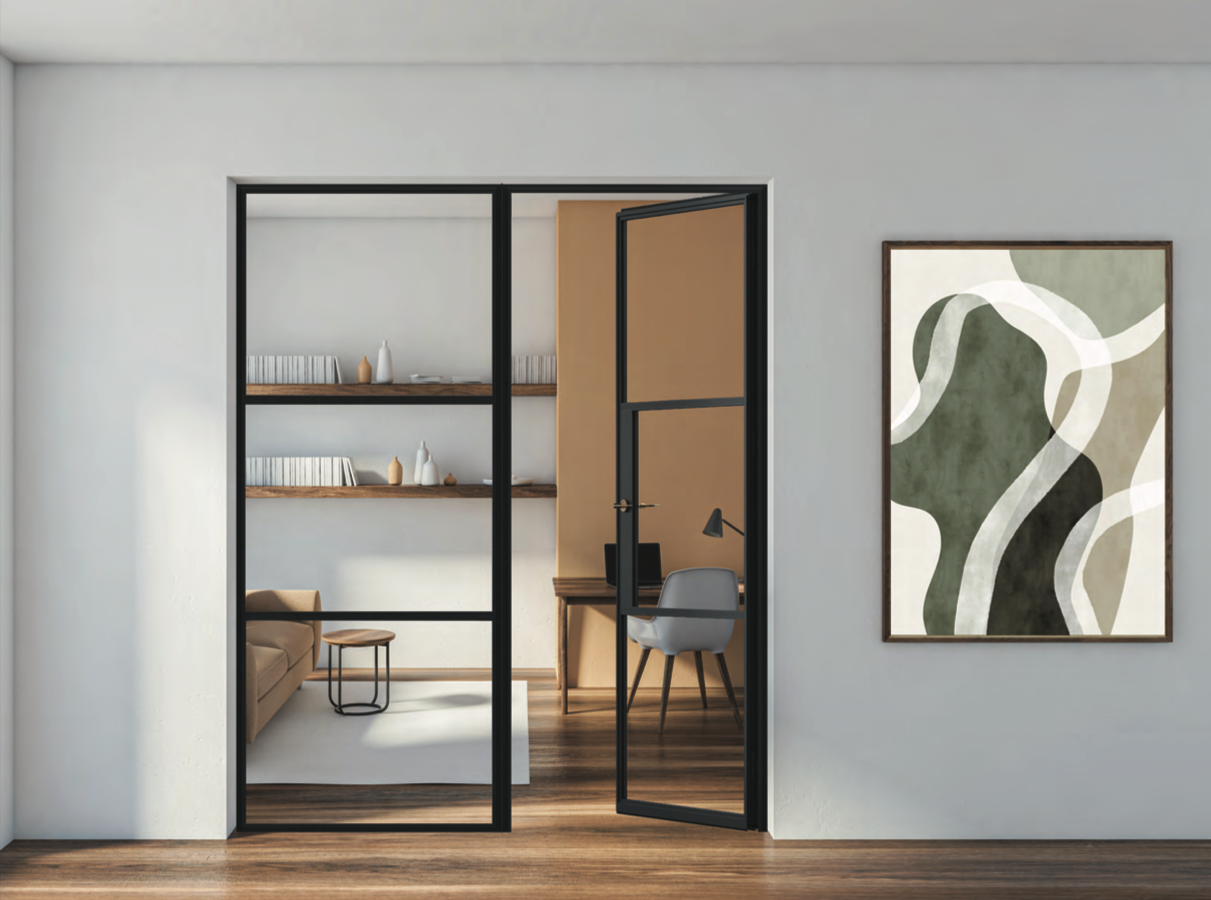As the UK cost of living crisis continues and we look for ways to reduce our energy bills, there may be an option you haven’t considered.
Integrated blinds may not be on your radar, but this clever glazing option can be effective at improving insulation, reducing emissions and saving you money on your heating bills.
The team at Manchester Window Factory has over 25 years of experience in the manufacturing and installation of windows, doors, and conservatories.
In this blog, we’ll explain what integral blinds are, how they work and how you can use integrated blinds to reduce your energy bills. So, if you want to save money on your heating bills and help the planet by using less energy, please keep reading.
What are internal blinds?
Also known as integral blinds or blinds between glass, internal blinds are so-called because they fit in between a double or triple-glazed window.
Instead of sitting on top of the window, internal blinds are integrated into the glass and operated via a control to allow the user to choose the level of light exposure, privacy and security they require.
Despite being around since the 1990s, integrated blinds are only becoming more widespread as the UK becomes more eco-conscious and seeks to reduce its energy bills and carbon footprint.
How do they work?
A discreet operating mechanism is mounted on the frame, giving the user control over the amount of light the blinds let in and the temperature the rooms are allowed to reach.
For example, you may want to limit sun exposure during the hottest part of the day (usually around 12-2 pm in the British summertime) but are happy to let the early morning sun shine through. While conventional blinds typically offer some flexibility, they just aren’t as versatile as integrated blinds.
In some cases, there is a ‘total blackout’ option for when you require total darkness in a room – replacing the need for heavy conventional blackout blinds or curtains.
Internal blinds v conventional blinds
Are internal blinds that much better than conventional blinds? Personal preference plays a part but, in a straight comparison, internal blinds come out on top.
Pros of Internal blinds
- Flexibility – different modes to suit your mood and circumstances
- Improve insulation
- Reduce heat loss
- Reduce heating bills
- Allow better temperature control
- Do not interfere with opening and closing doors or windows
- Create privacy and enhance security when needed
- Pets and small children friendly
- Fitted perfectly to your new or existing windows
- Low-maintenance
- Long-lasting – the same lifespan as the glazing
- Quick and easy for a professional to install
Cons of Internal blinds
- More expensive than conventional blinds and curtains
Pros of conventional blinds
- Can be purchased inexpensively
- Lots of choice of colours/patterns
- Can be made to measure your windows
- Can be easily replaced or upgraded
Cons of conventional blinds
- Attract dust and dirt
- Take up space
- Can spoil the look of your windows and doors
- Can prevent the smooth opening and closing of windows and doors
- Can become faded over time
- Can get stuck, malfunction or break
- Cords can be dangerous to pets and small children
The different types of internal blinds
There are two basic types of internal blinds, Venetian blinds and pleated blinds.
Venetian Integrated Blinds
Venetian blinds are created with horizontal slats, which can be adjusted to control light penetration and the level of privacy. Internal Venetian blinds have the same structure, just sealed within the glass for a clean and sleek appearance.
Pleated Integrated Blinds
Pleated integrated blinds are more akin to shutters and have the benefit of being able to be opened fully, should you desire it. The pleated fabric-like appearance has a softening effect on a room while allowing flexibility of light diffusion. Ideal for conservatories, pleated internal blinds can help you maintain a comfortable temperature throughout the year.
Internal blinds can be used in a variety of windows, doors, patio doors and even conservatories.
Internal window blinds for double glazing
Double-glazed units with internal blinds can be used anywhere you would have standard double glazing, from bedrooms, bathrooms and kitchens to conservatories, home offices and commercial buildings.
Internal window blinds for triple glazing
You can also opt for triple-glazed windows with integral blinds, or have integral blinds retrofitted into your existing triple-glazed units to enjoy all the benefits of triple glazing plus the convenience of integrated blinds.
Internal blinds for doors
It’s not just widows that can be retrofitted with or upgraded to internal blinds. Any glazing in your doors can also benefit from the addition of integral blinds. Where traditionally, a front or back door may have been protected and insulated using a blind or heavy curtain, internal blinds will do the same job without the need for fixtures and fittings.
Internal blinds for patio doors
Bi-fold doors are popular for patio doors because they allow maximum natural light to flow and provide uninterrupted views. However, when the sun’s glare is too strong, or you require some privacy, you will probably turn to blinds. There are conventional blind options for bi-fold doors, but they tend to be unwieldy and prevent the smooth closing and stacking of the bi-fold doors.
Integrated blinds offer the same privacy and security when needed, without compromising light penetration or the doors opening and closing. They also create minimal sightlines for uninterrupted views.
French doors with integral blinds
French doors can be manufactured with integral blinds in a uPVC, aluminium or timber frame. You can also have integral blinds retrofitted into your existing French doors. Since French doors usually feature two large panes of glass, it is a simple process to fit the internal blinds. With internal blinds, you can retain and enhance the classic appearance of your French doors, without adding bulky conventional blinds that take up space and spoil the look.
Internal blinds for conservatories
Last but not least, internal blinds are a great choice for conservatories, where you may need to prevent the room from reaching an uncomfortable temperature during the hottest part of the day in the summer months.
Internal blinds can be used for insulation
Blinds and curtains have long been used to improve the insulation of our homes and workplaces by providing a barrier to the heat escaping from our homes. The Energy Trust estimates that as much as 26% of all the heat lost in the average home is through windows and glass doors.
Because internal blinds are integrated into the glass, they provide a built-in barrier to the heat trying to escape.
Why can blinds reduce your energy bills?
Better insulation means you are losing less heat and do not need to have the heating on at such a high temperature or for as long as you would have previously.
You can also maximise natural light, so you don’t need to use electric lighting quite as much or as early during the day.
Replacing your internal blinds
If you would like to replace your conventional blinds with internal blinds, there are two options.
You can purchase a new unit with the internal blinds sealed in, which can then be easily installed in the usual manner by a professional fitter.
If your existing windows or doors meet the required specifications (at least 25-28mm between the layers of sealed glass) you can also have integrated blinds retrofitted into existing uPVC, timber or aluminium frames. Most double-glazed windows will meet these criteria, but you should check with the manufacturer.
This flexibility also allows you to upgrade to double or triple glazing with built-in integrated blinds for a more energy-efficient home.
With proper maintenance, integrated blinds should last the lifespan of the windows (at least ten years) and potentially many more. Some locations, such as coastal areas, may mean the windows require more cleaning or maintenance due to the harsh elements.
Colours and Styles
At Manchester Window Factory, we offer a wide range of internal blinds suitable for timber, aluminium, and uPVC frames.
Our integrated blinds are available in a full spectrum of shades, from subtle hues to brighter tones to make a statement. However you want your room to look, we have internal blinds to complement your decor.
We hope this quick guide to reducing your home energy use with internal blinds has been helpful.
If you want to learn more, email us at [email protected] or call 0161 976 4739. You can also fill in our online quote form, and we will get back to you asap with a free, no-obligation quote.
We look forward to hearing from you!

